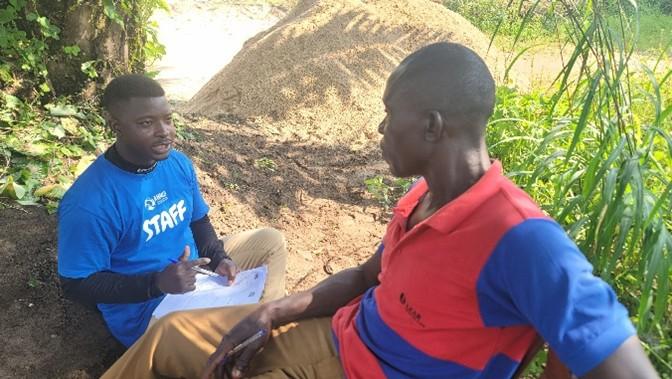Dieudonne Wongibe Poupezo
Cameroon's coastline spans approximately 402km along the Atlantic, providing a nursery for sharks (Ophman 2023). However, bycatch and pollution threaten local Sphyrna lewini. Bycaught at a rate of 10% along this coastline and classified as Critically Endangered by the IUCN Red List. No study has been published on sharks aggregation, migration, bycatches, and distribution, except sightings made by fishers. Sharks are potential pollutant storage organ but due to protein demand, sharks constantly arrive in Cameroon shoreline as fishers deploy nonregulated cotton nets, which ends up entangling these species. Sharks are evolutionary distinct in fish lineages with a capital functional value in marine ecosystems but, poorly known in Cameroon. Though rarely encountered, sharks are considered a great delicacy by locals, resulting in over-exploitation as fishermen depend on sea products for protein sources/income.
The main aim is to identify critical sites for bycatch (a proxy to feeding, and aggregation sites) and potential pollutants in three tissues of elasmobranchs along the Cameroon coastline.

Questionnaire survey in Limbe. © Wongibe Dieudonne..
To achieve the above aim, a Fisher's Consent and Questionnaires survey we will be organized with local chiefs, fishermen and fisheries managers in each study sites, to better understand the fishing practice. Also, a GPS workshop for fishermen to gain skills on the GPS and the importance of geo-referencing fishing/bycatch areas. Offshore, a weekly Ecological assessments and good fishing practices survey of five fishermen, equipped with Gramin-GPS to record their fishing zones, for ecological assessments and spatial analysis of bycatch areas, hence proposing zoning plans that prioritize habitat protection for sustainable use. Finally, Biometric measurement and tissues (gills, muscle) of sharks will be collected from species in small-scale fisheries market and laboratory analysis will be conducted to assess potential contamination.
The study will create opportunities for ecotourism. Fishermen will act as field guides, etc. Trained fishermen will promote positive attitudes towards elasmobranch and coastal marine biodiversity. For future generations, non-conservation beliefs and anthropogenic threats will be reduced. Additionally, results obtained from the study will be shared to fishermen/traders, NGOs, and other stakeholders. Locally, anticipated results will bring sympathy for the protection of sharks as well as other threatened species and ameliorate the coastal management by stakeholders. Also, recommendations will contribute to the coastal marine management plan. The awareness study will improve long-term conservation, by empowering fishers as conservation actors. Nationally, it is a bedrock on threads faced by sharks in Cameroon by providing baseline information bycatch and tissue pollutants.